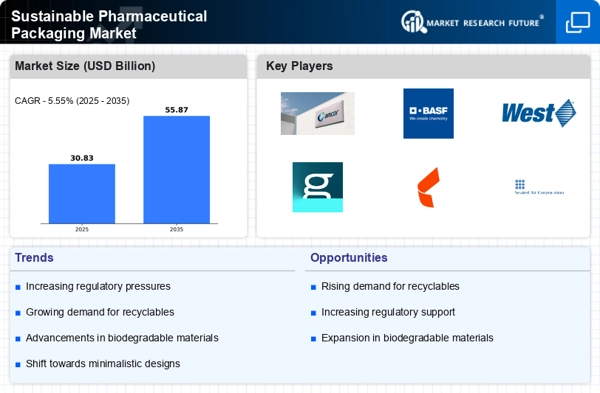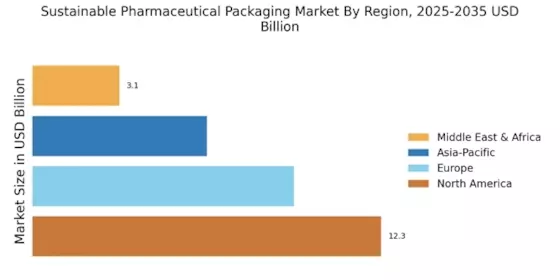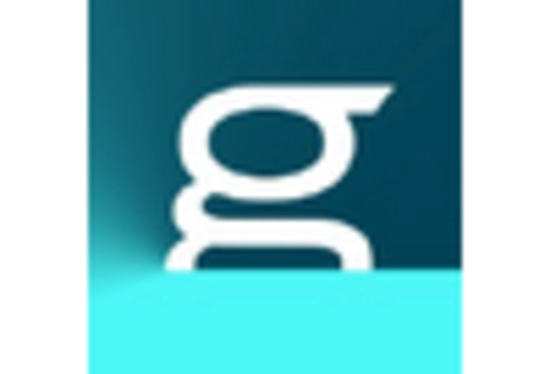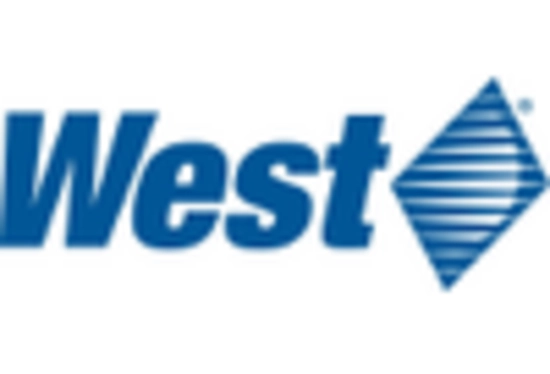Increase in Environmental Awareness
The Sustainable Pharmaceutical Packaging Market is experiencing a notable increase in environmental awareness among consumers and businesses alike. This heightened consciousness regarding ecological issues has led to a growing demand for packaging solutions that minimize environmental impact. As consumers become more informed about the consequences of plastic waste and pollution, they are increasingly favoring products that utilize sustainable materials. This trend is reflected in market data, which indicates that the demand for eco-friendly packaging solutions is projected to grow at a compound annual growth rate of approximately 8% over the next five years. Companies are responding by innovating and adopting sustainable practices, thereby driving the Sustainable Pharmaceutical Packaging Market forward.
Regulatory Pressures and Compliance
Regulatory pressures are significantly shaping the Sustainable Pharmaceutical Packaging Market. Governments and regulatory bodies are implementing stringent guidelines aimed at reducing plastic waste and promoting sustainable practices. These regulations often mandate the use of recyclable or biodegradable materials in pharmaceutical packaging. For instance, recent legislation in various regions has set ambitious targets for reducing single-use plastics, compelling pharmaceutical companies to adapt their packaging strategies. This compliance not only helps in meeting legal requirements but also enhances brand reputation among environmentally conscious consumers. As a result, the Sustainable Pharmaceutical Packaging Market is likely to witness accelerated growth as companies strive to align with these evolving regulations.
Corporate Social Responsibility Initiatives
Corporate social responsibility (CSR) initiatives are becoming integral to the Sustainable Pharmaceutical Packaging Market. Many pharmaceutical companies are recognizing the importance of sustainability as part of their corporate ethos. By adopting sustainable packaging practices, these companies not only enhance their brand image but also contribute positively to environmental conservation. CSR initiatives often include commitments to reduce carbon footprints and improve waste management practices, which directly influence packaging choices. As more companies embrace sustainability as a core value, the Sustainable Pharmaceutical Packaging Market is expected to grow, driven by the collective efforts of businesses to create a more sustainable future.
Consumer Preference for Sustainable Products
Consumer preference for sustainable products is a driving force in the Sustainable Pharmaceutical Packaging Market. As awareness of environmental issues grows, consumers are increasingly seeking out products that align with their values, including those that utilize sustainable packaging. Surveys indicate that a substantial percentage of consumers are willing to pay a premium for products that are packaged sustainably. This shift in consumer behavior is prompting pharmaceutical companies to rethink their packaging strategies, leading to a greater emphasis on sustainability. Consequently, the Sustainable Pharmaceutical Packaging Market is likely to expand as companies respond to this demand by integrating eco-friendly materials and practices into their packaging solutions.
Technological Advancements in Packaging Solutions
Technological advancements are playing a pivotal role in the evolution of the Sustainable Pharmaceutical Packaging Market. Innovations in materials science have led to the development of new biodegradable and compostable materials that meet the stringent requirements of pharmaceutical packaging. For example, advancements in plant-based polymers and smart packaging technologies are enabling companies to create packaging that is not only sustainable but also functional. This shift towards innovative packaging solutions is expected to drive market growth, with estimates suggesting that the market for sustainable packaging technologies could reach USD 500 million by 2027. As companies invest in research and development, the Sustainable Pharmaceutical Packaging Market is poised for significant transformation.


















Leave a Comment